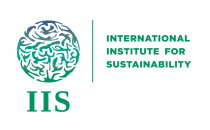Publications > Article
Natural regeneration and biodiversity: a global meta-analysis and implications for spatial planning
Natural regeneration offers a cheaper alternative to active reforestation and has the potential to become the predominant way of restoring degraded tropical landscapes at large-scale. We conducted a meta-analysis for tropical regions and quantified the relationships between both ecological and socioeconomic factors and biodiversity responses in naturally regenerating areas. Biogeographic realms, past disturbance, and the human development index (HDI) were used as explanatory variables for biodiversity responses. In addition, we present a case study of large-scale natural regeneration in the Brazilian Atlantic Forest and identify areas where different forms of restoration would be most suitable. Using our dataset for tropical regions, we showed that natural regeneration was predominantly reported within: the Neotropical realm; areas that were intensively disturbed; and countries with medium HDI. We also found that biodiversity in regenerating forests was more similar to the values found in old growth forests in: countries with either low, high, or very high HDI; less biodiverse realms; and areas of less intensive past disturbance. Our case study from Brazil showed that the level of forest gain resulting from environmental legislation, in particular the Brazilian Forest Code, has been reduced, but remains substantial. Complementary market incentives and financial mechanisms to promote large-scale natural regeneration in human-modified agricultural landscapes are also needed. Our analysis provides insights into the factors that promote or limit the recovery of biodiversity in naturally regenerating areas, and aids to identify areas with higher potential for natural regeneration.

